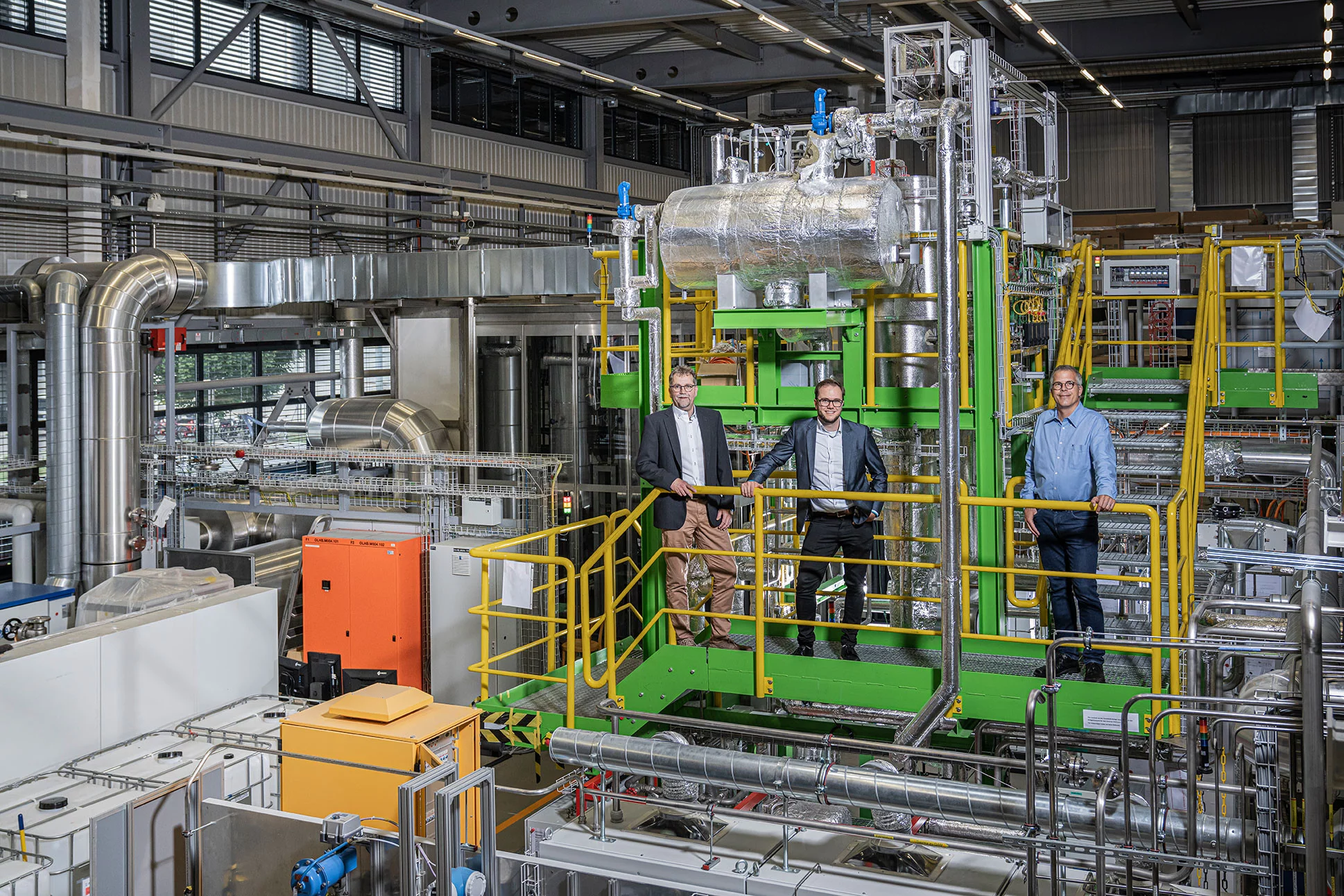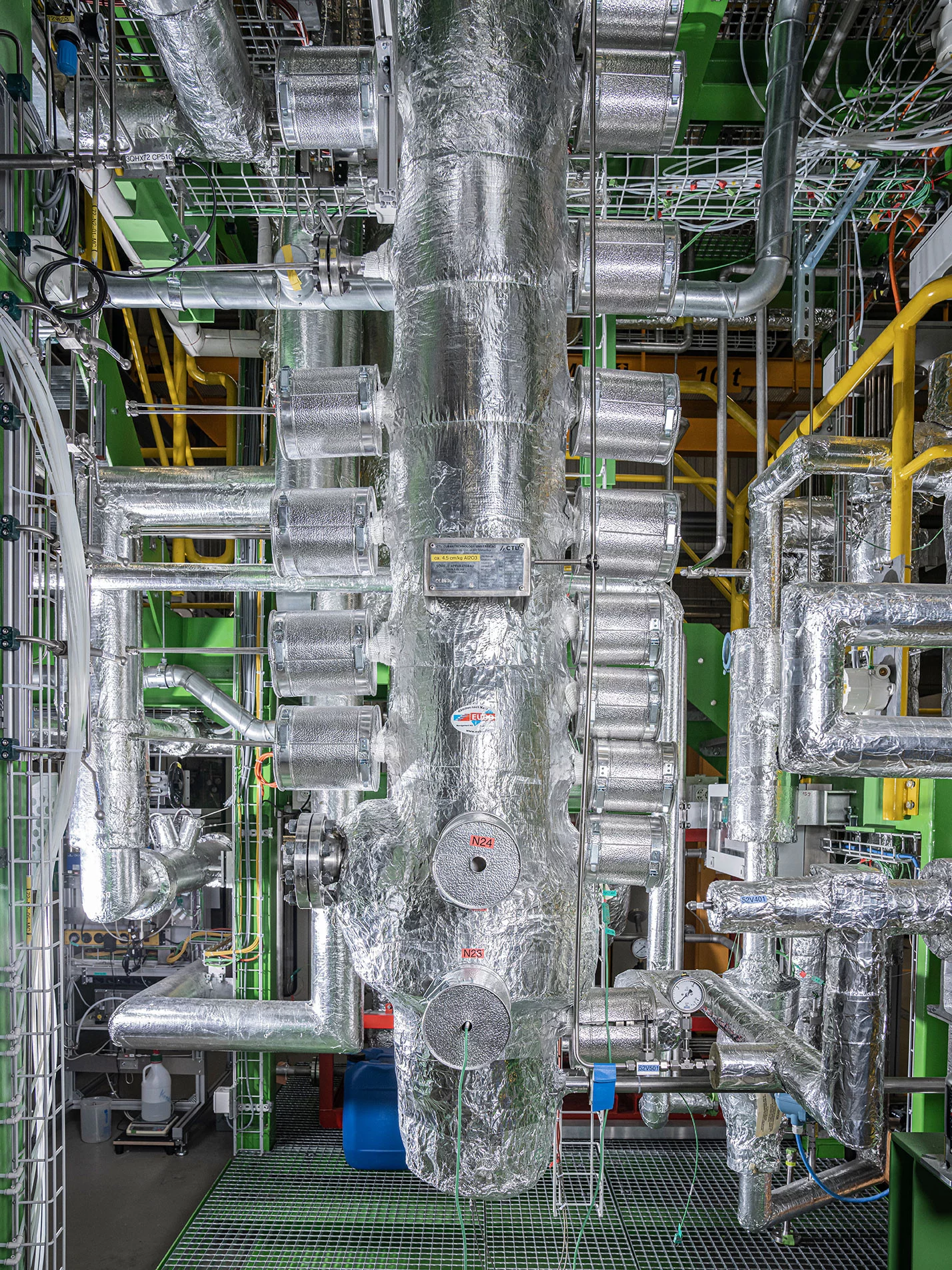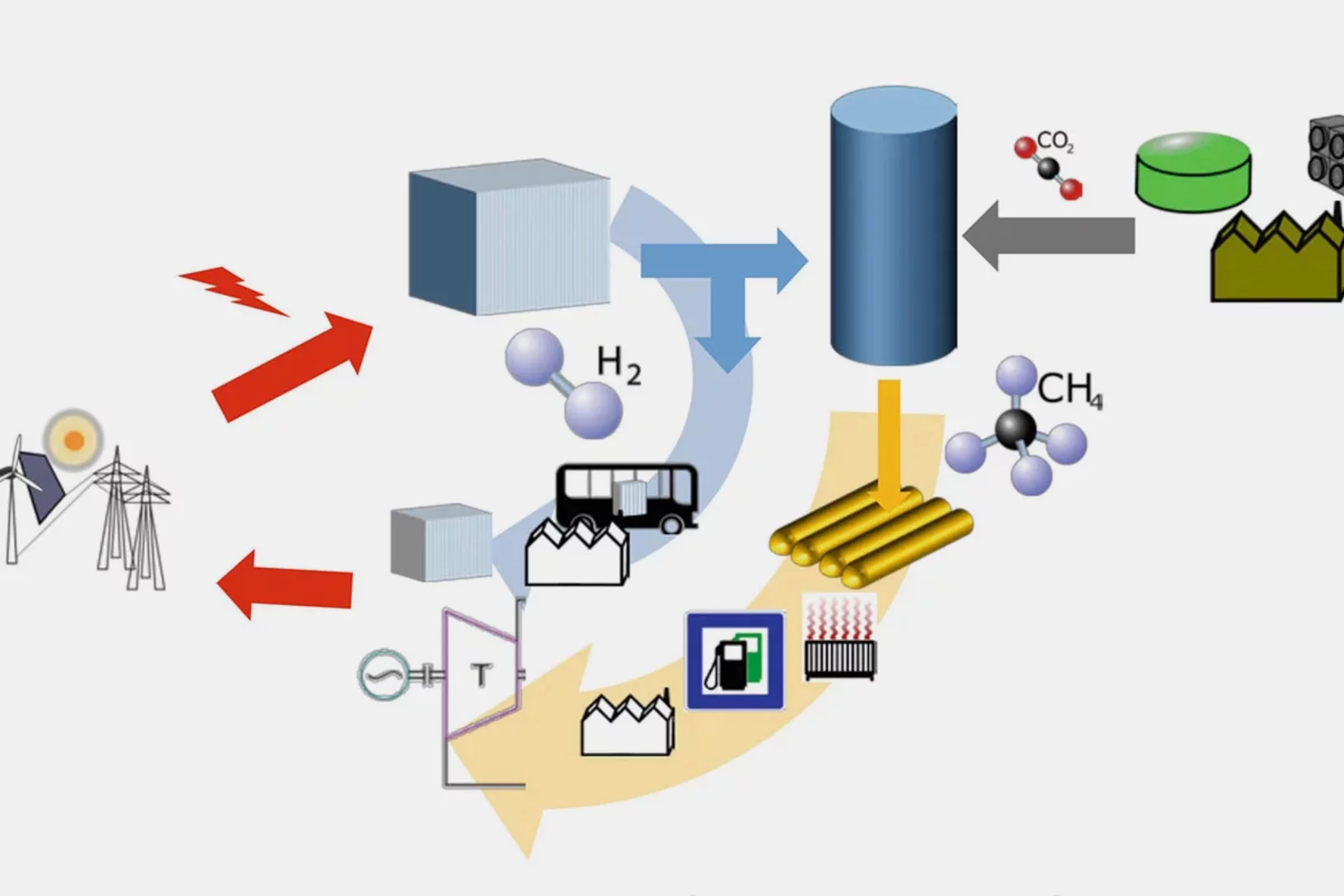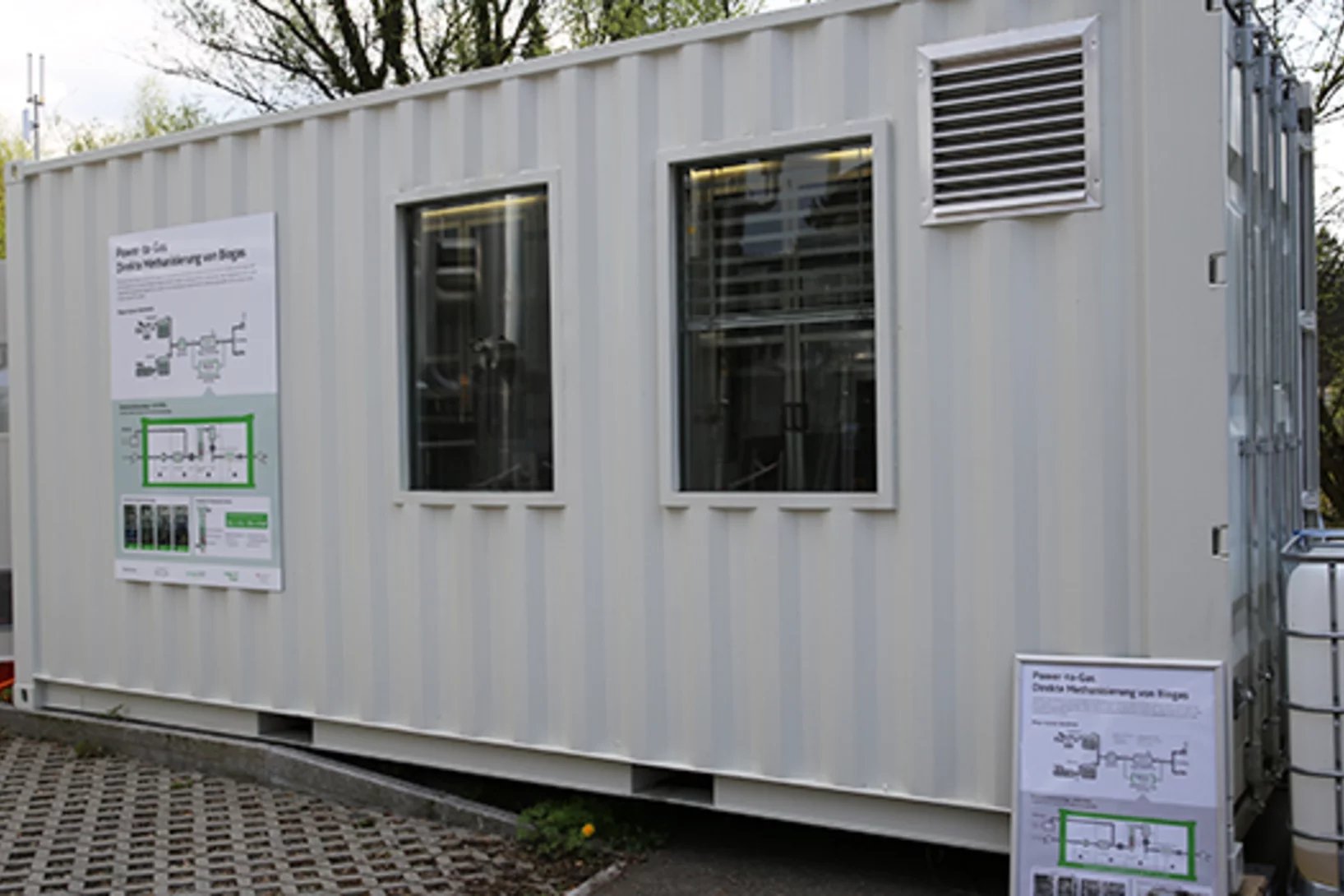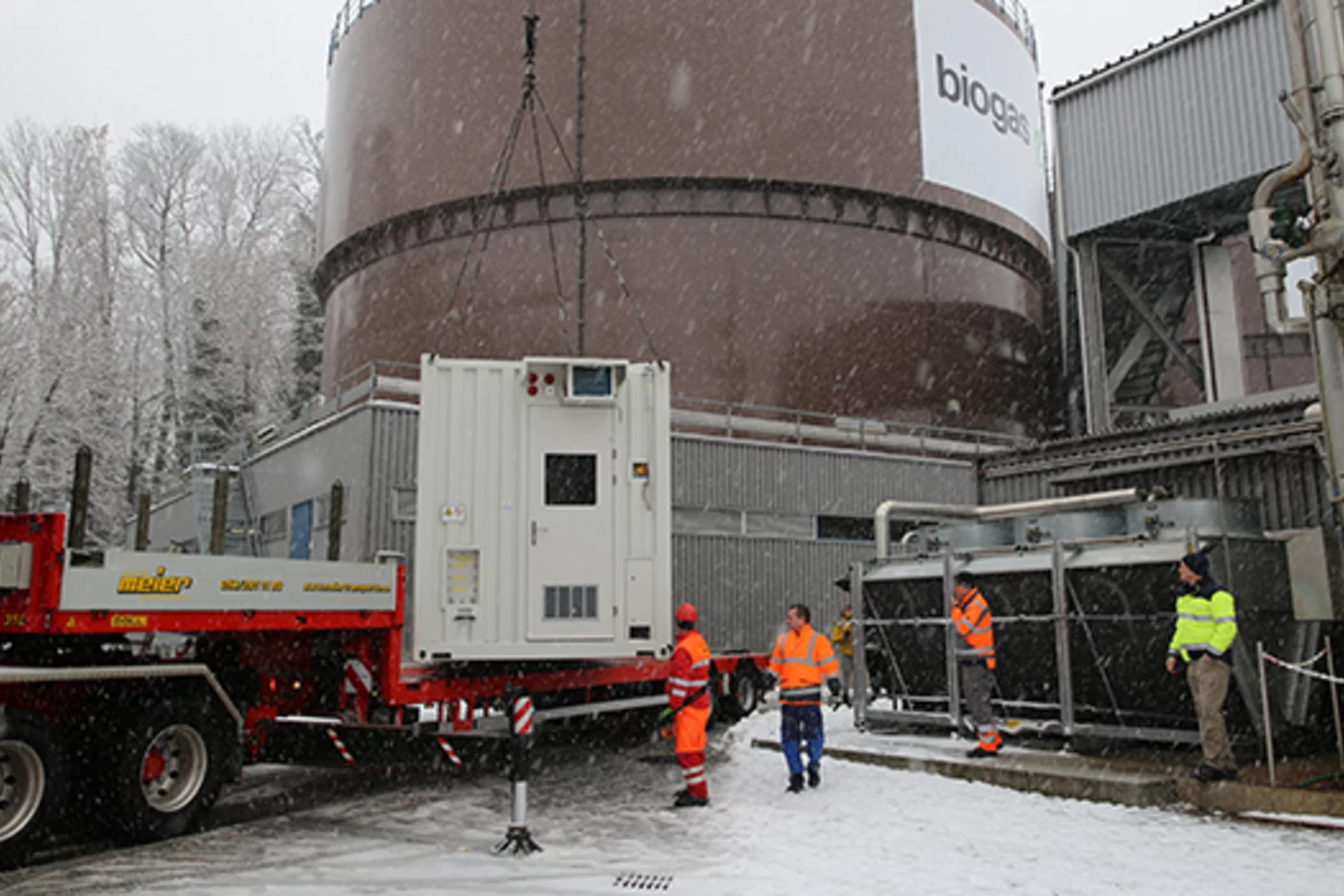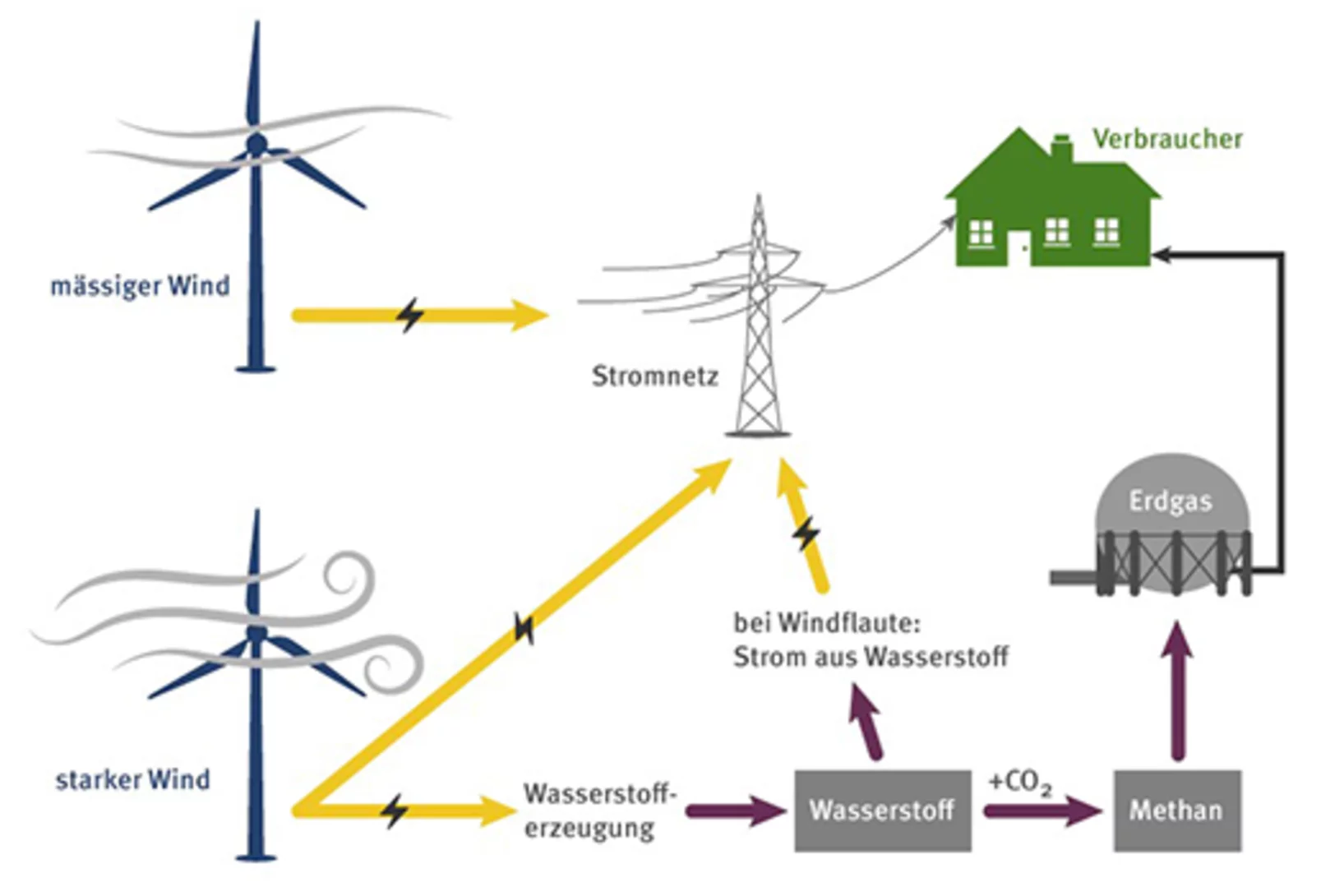The Paul Scherrer Institute PSI and the start-up AlphaSYNT have a common mission. By signing a cooperation and licensing agreement, they aim to commercialise a novel approach to “power-to-gas” conversion, or to be more specific: “power-to-methane”. The innovative methanation process developed by PSI will allow energy to be stored as methane gas in future.
For almost 10 years, the Bioenergy and Catalysis Laboratory at PSI has been researching processes for converting biogas obtained from dry biomass – mostly agricultural and forestry waste – cleanly and efficiently into liquid or gaseous fuels. Biomethane, for example, must have sufficiently high purity to be used effectively in the natural gas grid, so must contain at least 96 percent methane. Since the original biogas obtained by digesting wet biomass, such as sewage sludge or crop residues, contains around 40 percent carbon dioxide (CO2), however, the biogas first needs to be cleaned. The current procedure separates the impurities from the methane and emits them as exhaust gases.
The solution developed at PSI takes a far more elegant approach: direct methanation. "It’s no longer necessary to separate the CO2 – this is mixed with hydrogen together with the biogas in a catalytic fluidised bed reactor. This triggers a chemical reaction that allows additional methane to be produced," says Tilman Schildhauer, Senior Scientist and head of Methanation Research at PSI. The energy required for the process can come from electricity from renewable energy sources – such as solar power plants whose output in the summer months may occasionally be so high that they have to be disconnected from the main grid. In future this extra electricity will no longer be lost, but will be converted by the methanation process and stored in the form of methane gas to balance seasonal peaks and troughs. Just like storing energy in a battery, in other words, but over a longer term. If required, the stored energy can later be converted back into electricity, used in industry to supply high-temperature heat or used as fuel in the transport sector.
Symbiosis of science and industry
The war in Ukraine and the resulting sanctions against Russia have once again highlighted Europe’s reliance on fossil fuels. To break this dependence and achieve the goal of net zero by 2050 – reducing greenhouse gas emissions to a level that natural and man-made carbon storage alternatives can deal with – intensive research into new solutions is required. The methanation process developed at PSI makes an important contribution here. Successful commercialisation of such solutions, however, requires not just the technology itself, but industrial and business know-how.
"Investors need to be found, customers acquired and contracts awarded for the construction of certified fluidised bed reactors, along with the necessary infrastructure. The transition from research into industry-scale use is an art in itself," Tilman Schildhauer explains. This requires strategic skills and a network of quite different suppliers who must be familiar with the technology. PSI has found the ideal partner in AlphaSYNT, whose expertise is well up to meeting the challenges. They want to work together to bring the innovative methanation process to market – but not for private homes, the technology is much too complex for that. The main beneficiaries of this technology are likely to be large-scale energy providers who operate gas, biogas plants or wastewater treatment plants.
"Marketing this novel technology should mean fossil gases can gradually be replaced by renewable methane gas. The stored electricity derived from renewable energy sources should also help stabilise the electricity grid, as it can be used whenever needed and is not seasonal dependent," explains Andreas Aeschimann, CEO of AlphaSYNT.
From electricity to hydrogen to methane
Power-to-methane is a two-stage process. The first step is to produce hydrogen (power-to-hydrogen), which is achieved by electrolysing water. In this process, electricity from renewable sources is used to split water (H2O) into hydrogen (H2) and oxygen (O). This method converts the electrical energy into chemical energy, in the form of hydrogen. The next stage involves the actual methanation process. The hydrogen produced is mixed with the biogas to convert the carbon dioxide it contains into methane and water. The electrical energy is then converted into chemical energy, in the form of methane (power-to-methane).
Back in 1902, the two French chemists Paul Sabatier and Jean Baptiste Senderens discovered the reaction in which a combination of carbon dioxide (CO2) and hydrogen (H2) at high temperature produces methane (CH4) and water (H2O). Since this discovery, many different methods have been developed to make this reaction as efficient as possible. Nowadays a distinction is made between catalytic and biological conversion. The first method uses specific metals (mostly nickel), while the second employs special micro-organisms to speed up the reaction.
The methanation process developed at PSI is based on the catalytic method. Researchers have come up with a special fluidised bed reactor containing fine particles of nickel as a catalyst. When the biogas and hydrogen are fed in, the particles are swirled around and converted into a fluidised state through the upward flow, so the reaction is continuous.
This reaction not only produces methane and water, but also high temperatures. To maintain the process and achieve a high throughput, the mixture must be cooled down to the optimal reaction temperature. Tilman Schildhauer and his team have devised a special trick to resolve this: "We use a pipe system that allows oil to flow through our reactor. This oil absorbs the heat inside the reactor and releases it outside – just like a refrigerator," Schildhauer explains. This construction, combined with the fluidisation of the particles, provides particularly intense cooling and results in an isothermal, compact and low-cost reactor.
The question is, however, why such a two-stage power-to-methane process is even necessary – after all, the excess energy is already stored in the form of hydrogen in the first stage. Using the type of fuel cells found in hydrogen-powered vehicles, the hydrogen can be directly converted back into electricity. So does that mean methanation is superfluous? "Hydrogen is a very lightweight gas and takes up enormous storage volumes. Conversion into methane therefore saves on space, because methane only takes up a third of the volume of hydrogen, while offering the same calorific value. What’s more, methane can already be used and stored in the existing gas infrastructure. Methane is a long-life battery that we can profit from even today," says Tilman Schildhauer
The reactor is part of the Energy System Integration Platform of PSI, or ESI for short. The goal of this platform is to investigate, in close collaboration with partners from research and industry, the technical and economic viability of different variants of power-to-gas technology.
Text: Paul Scherrer Institute/Benjamin A. Senn
AlphaSYNT was founded as a start-up at the end of 2020 by Andreas Aeschimann (CEO) and Luca Schmidlin (CTO). With so many years of engineering experience, Andreas Aeschimann is well versed in the planning and construction of complex installations. He knows the industry well and also has the necessary contacts and business expertise. His co-founder Luca Schmidlin has worked in power-to-gas research since 2014. Apart from his technical expertise, he also brings experience in operating power-to-X demo plants and has a very extensive network of industry contacts. He is in charge of the Power-to-X research platform at OST, the Eastern Switzerland University of Applied Sciences.
Contact
More articles on this topic
About PSI
The Paul Scherrer Institute PSI develops, builds and operates large, complex research facilities and makes them available to the national and international research community. The institute's own key research priorities are in the fields of future technologies, energy and climate, health innovation and fundamentals of nature. PSI is committed to the training of future generations. Therefore about one quarter of our staff are post-docs, post-graduates or apprentices. Altogether PSI employs 2300 people, thus being the largest research institute in Switzerland. The annual budget amounts to approximately CHF 460 million. PSI is part of the ETH Domain, with the other members being the two Swiss Federal Institutes of Technology, ETH Zurich and EPFL Lausanne, as well as Eawag (Swiss Federal Institute of Aquatic Science and Technology), Empa (Swiss Federal Laboratories for Materials Science and Technology) and WSL (Swiss Federal Institute for Forest, Snow and Landscape Research). (Last updated in June 2024)

